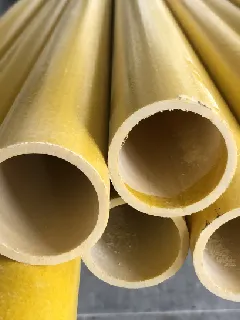loading...
- No. 9, Xingyuan South Street, Dongwaihuan Road, Zaoqiang County, Hengshui, Hebei, China
- admin@zjcomposites.com
- +86 15097380338
- Welcome to visit our website!
frp roof deck
Understanding FRP Roof Decks Benefits and Applications
In the world of construction and architecture, materials play a crucial role in determining the performance, durability, and overall success of a building project. Among the many materials available today, Fiber Reinforced Polymer (FRP) has emerged as a game-changer, particularly in roofing systems. FRP roof decks are increasingly being recognized for their unique properties and advantages, making them an appealing choice for a variety of applications.
What is FRP?
Fiber Reinforced Polymer (FRP) is a composite material made of a polymer matrix reinforced with fibers. The fibers can be made from various materials, including glass, carbon, or aramid. This combination results in a lightweight, strong, and corrosion-resistant material that can endure harsh environmental conditions. FRP products are engineered to provide high performance while maintaining a lower weight compared to traditional materials such as steel or concrete.
Advantages of FRP Roof Decks
1. Lightweight and Strong One of the most significant benefits of FRP roof decks is their lightweight nature. This feature greatly reduces the load on the building's structure, allowing for more design flexibility and potentially lowering construction costs. Despite being lightweight, FRP offers exceptional tensile strength and resistance to impact, making it a durable option for roof decking.
2. Corrosion Resistance Traditional roofing materials often face challenges related to corrosion, especially in environments exposed to moisture and chemicals. FRP, on the other hand, exhibits excellent resistance to corrosion, making it ideal for areas with high humidity or chemical exposure, such as industrial settings or coastal locations.
3. Thermal Performance FRP materials have good thermal insulating properties. They can help maintain temperature stability in the building, which can lead to energy savings by reducing heating and cooling demands. This characteristic is particularly beneficial in reducing the overall environmental impact of a building.
4. Design Flexibility The versatility of FRP allows architects and engineers to create unique and complex designs that may not be feasible with traditional materials. FRP can be molded into various shapes and sizes, providing more creative possibilities for aesthetic and functional design aspects of roofs.
frp roof deck

5. Ease of Installation FRP roof decks are generally easier and quicker to install compared to heavier materials. This can lead to significant time savings during the construction process, resulting in reduced labor costs. Moreover, the lightweight nature of FRP reduces the need for extensive support structures, making the installation process smoother.
Applications of FRP Roof Decks
FRP roof decks are suitable for a wide range of applications, including
- Commercial Buildings Many commercial structures utilize FRP roof decks for their lightweight and corrosion-resistant properties, ensuring long-lasting performance and minimal maintenance.
- Industrial Facilities In factories and manufacturing plants where chemicals and moisture levels can be high, FRP provides a durable solution that stands up to the harsh conditions.
- Residential Construction Increasingly, residential projects are exploring the use of FRP decking to enhance both performance and aesthetics in their roofing systems.
- Bridges and Walkways FRP is also finding its way into applications like pedestrian bridges or walkways where strength-to-weight ratio is paramount.
Conclusion
The adoption of Fiber Reinforced Polymer (FRP) roof decks is poised to transform the construction industry. With their lightweight, durable, and corrosion-resistant properties, they offer significant advantages over traditional roofing materials. As architects and builders continue to seek innovative solutions for modern construction challenges, FRP roof decks will likely become an increasingly popular choice, paving the way for more efficient, sustainable, and aesthetically pleasing buildings. As technology advances, the potential applications for FRP continue to grow, leaving a mark on the future of construction.
-
The Rise of FRP Profiles: Strong, Lightweight, and Built to LastNewsJul.14,2025
-
SMC Panel Tanks: A Modern Water Storage Solution for All EnvironmentsNewsJul.14,2025
-
GRP Grating: A Modern Solution for Safe and Durable Access SystemsNewsJul.14,2025
-
Galvanized Steel Water Tanks: Durable, Reliable, and Ready for UseNewsJul.14,2025
-
FRP Mini Mesh Grating: The Safer, Smarter Flooring SolutionNewsJul.14,2025
-
Exploring FRP Vessels: Durable Solutions for Modern Fluid HandlingNewsJul.14,2025
-
GRP Structures: The Future of Lightweight, High-Performance EngineeringNewsJun.20,2025
